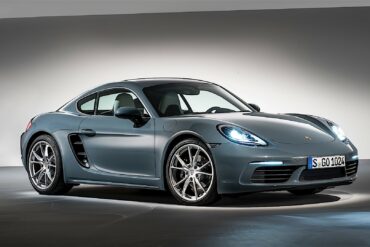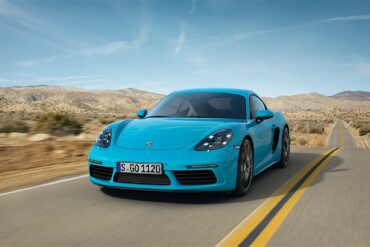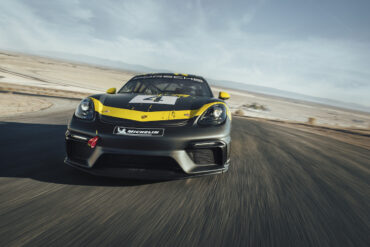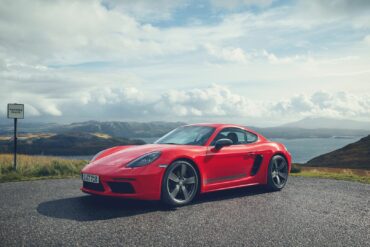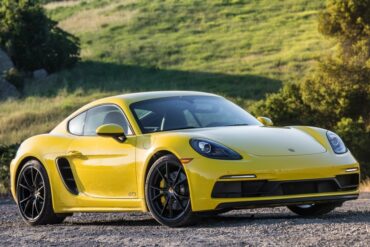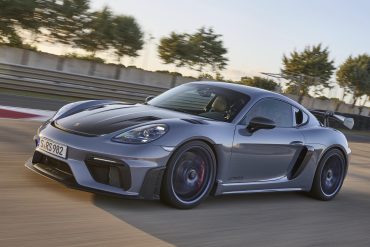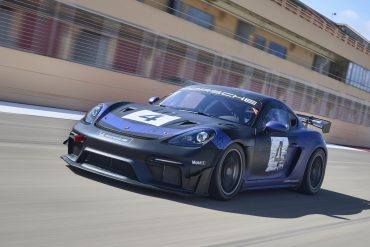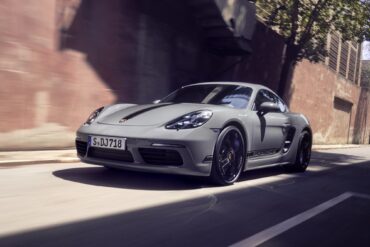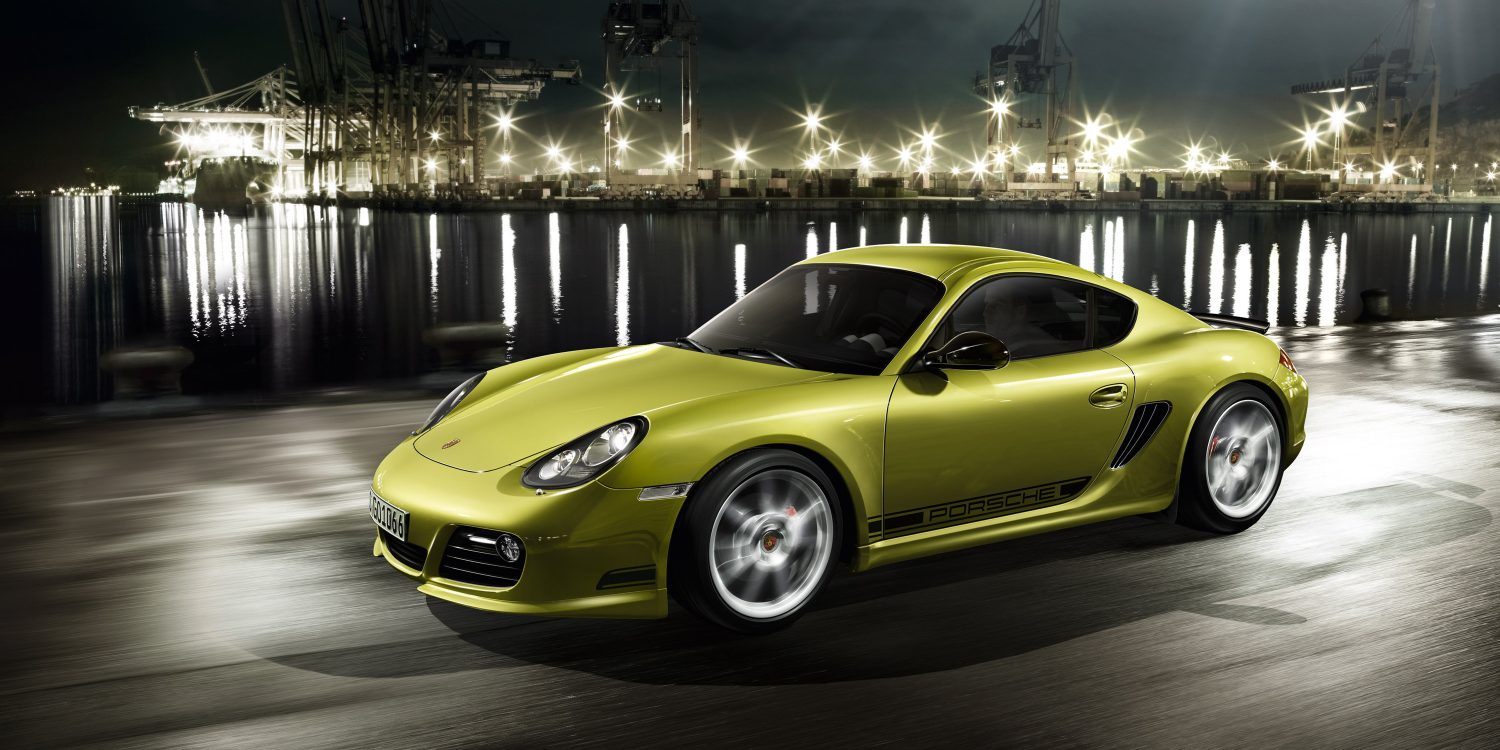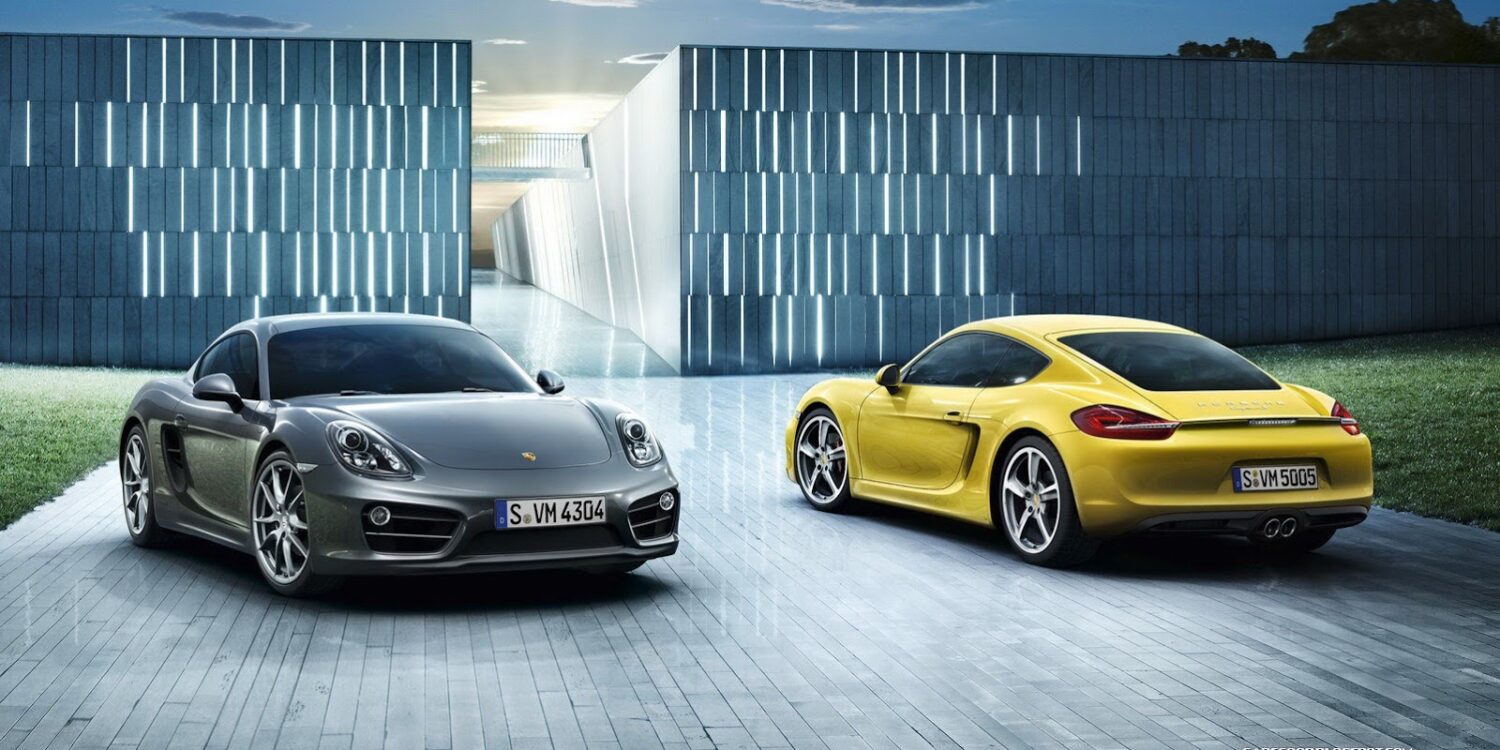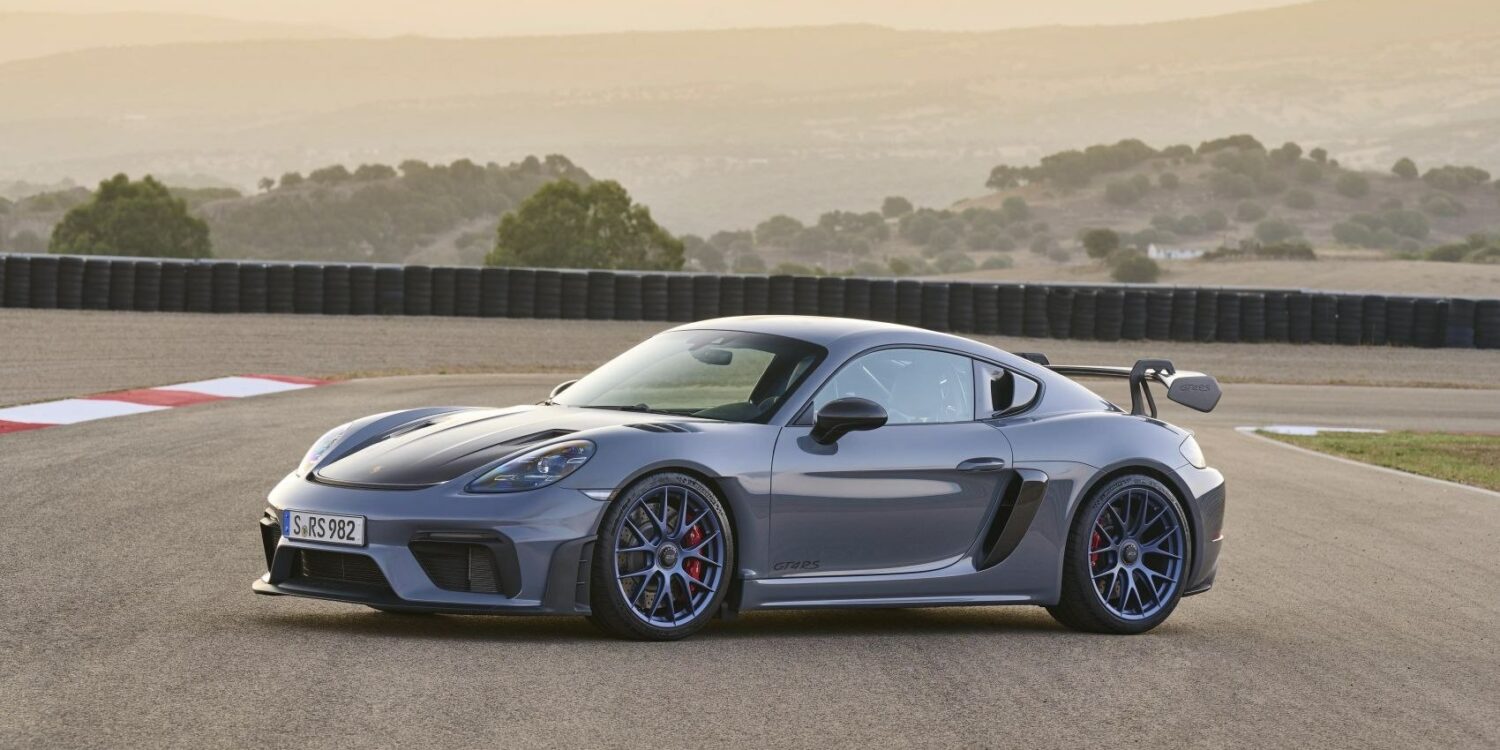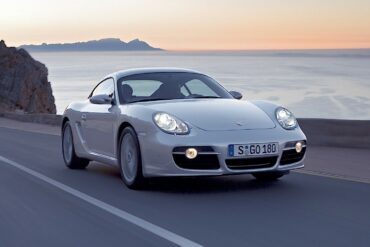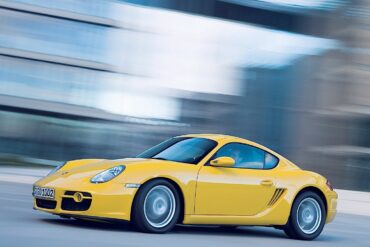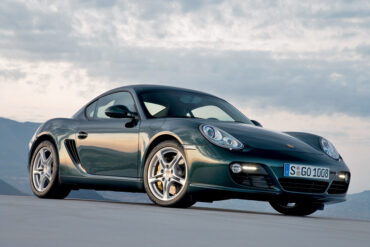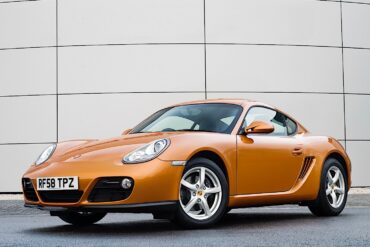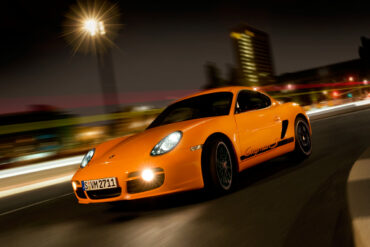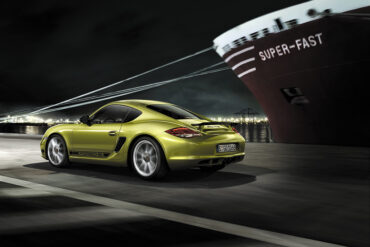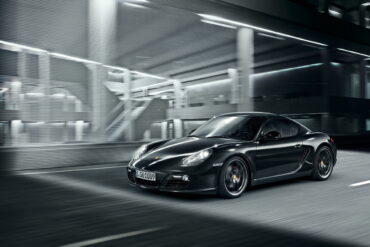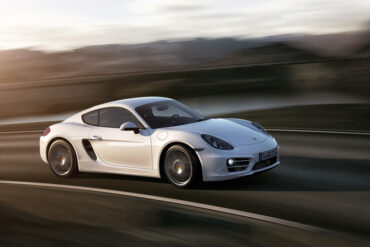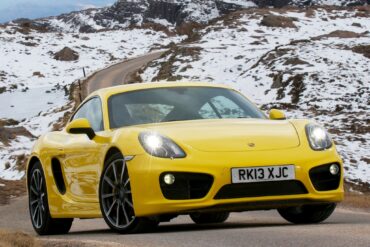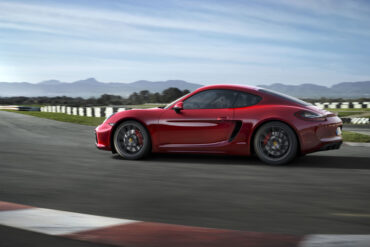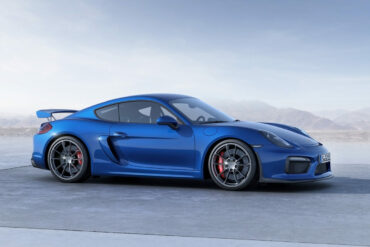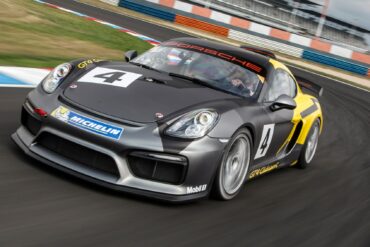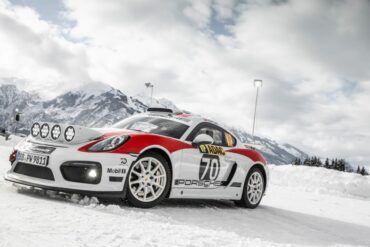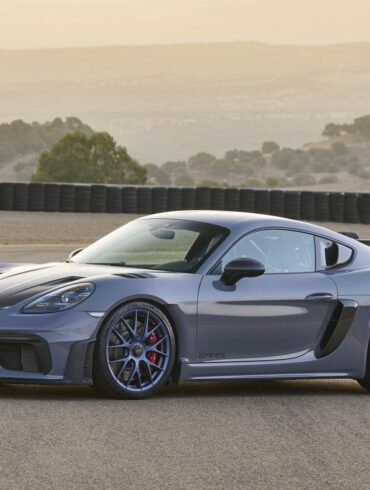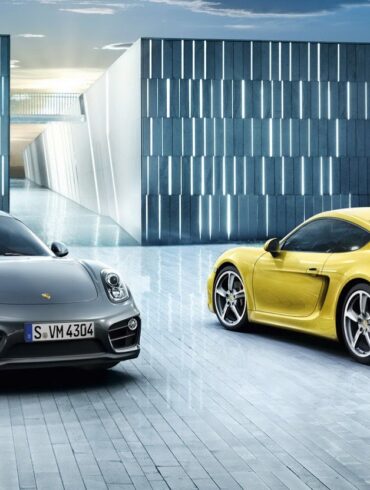With the 982-generation Boxster/Cayman platform, Porsche went back in time to pull out the 718 name, a reminder that the sports car maker has been doing the small sports car thing for a long time. The 718 of course, is diminutive race car that won the Targa Florio race in 1959 and 1960. The marketing stunt was meant to evoke these past Porsche racing successes with light cars like the 718 that outmaneuvered competitors with larger and more powerful engines. The reason? Porsche got rid of the naturally aspirated flat-6 engines and instead would now have flat-4 turbocharged engines.
Porsche Cayman
The Ultimate Model Guide
Much More than a Boxster With a Roof
Current Cayman Lineup / Cayman Generations / Every Cayman Model Ever
The Cayman S was first unveiled in 2005 and went on sale in late 2005 as a 2006 model year car. A year later, the base Cayman showed up as a 2007 model year car. Both the Cayman and second generation Boxster roadster shared their mid-engine platform and many components. The two cars share the same chassis, with the same wheelbase, width and tracks. Although the sheet metal is different, they share windscreen, doors, cabin and 40 percent of the other components, while the remaining components either come from 911 or are adapted from both cars. The suspension design is fundamentally the same as that of the Boxster with revised settings due to the stiffer chassis with the car's fixed roof. The Cayman S was powered by a 3.4-litre flat-six mated to a 6-speed manual transaxle, a 2.7-litre engine with a 5-speed transmission was standard for the base model. A facelift of the Porsche Cayman came in February 2009. The base Cayman's engine displacement was increased to 2.9-litre while the Cayman S gained direct injection. Both the Cayman and Cayman S maintained a 9 hp power advantage over their roadster sibling, the Boxster.
The 981 Cayman was – and remains – a benchmark car, and when it arrived as a 2013 model year car. It was getting closer to the 911 in terms of desirability and performance. The design was sleeker and more modern than the odd-looking earlier generation and it still looks great today. It got a longer wheelbase, wider tracks and lower overall height. The front and rear views of the 981 stay true to the Cayman with some distinct differences. Beyond these obvious differences in physical dimensions, the body of the 981 uses Porsche's newest weight savings design of mixed steel and aluminum construction. The new interior has very little in common with the original, a worthy update the modernized the inside of the Cayman. The power train of the updated Caymans are probably the single biggest carry over item from the previous model. The 9A1 engine first appeared in 2009 and continued on into the new 981 Caymans. The biggest difference we see in the 981 is that the Cayman engine displacement has been reduced from 2.9 liters back down to 2.7 liters (like it was in 2007). The Cayman S engine displacement was unchanged at 3.4 liters.
Ever-stringent government fuel economy and CO2 emissions standards forced Porsche to downsize and turbocharge its entire range of engines for the 982 generation update. This meant that the marketing department leaned on the flat-four heritage of the 550 Spyder and 718 race cars, dubbing the internally-designated 982 Boxster and Cayman models as the 718. The MA2-based flat-fours of the base and S versions of the Cayman had more varied specifications than any of their predecessors. Porsche fans who missed the howl of a flat-six in a new mid-engined roadster collectively rejoiced with the introduction of the 718 Cayman GT4, which featured an MA2-derived, naturally aspirated 4.0-liter flat-six, which generated 414 hp and revved to 8,000 rpm. This drivetrain reverted to the three-point mounting system of previous six-cylinder Caymans. As expected the Cayman GT4 was an absolutely perfect track-focused car that could also do daily chores if needed. Perhaps the most exciting car in the 982 Cayman generation was the 718 Cayman GTS 4.0. The old GTS used a 2.5-liter turbocharged flat-4, and while it was a perfectly strong engine with lots of low-end torque, it lacked the personality and linear power delivery of a free-breathing flat-six. It didn't sound half as good, either. The GTS 4.0 was built to offer more performance and more grunt as well as a more aggressive design and all the good options included as standard. The new 4.0-liter engine was borrowed from the 718 Spyder and Cayman GT4, detuned to produce 394 horsepower and 309 pound-feet of torque. A 6-speed manual is standard. The GTS 4.0 basically became the perfect daily sports car.
Note: We haven't lost our minds. We are classifying the first generation Cayman as the second generation Cayman on this website. The reason is simple. The Cayman (project 987C) and the second generation Boxster roadster (project 987) shared the same mid-engine platform and many components. Since both the Boxster and Cayman have stated in lockstep since, it made sense to to align generation for the purposes of research. You will see the first generation Cayman referred to as the second generation Cayman throughout this site. It keeps things much neater in following generations.
Current 718 Cayman Lineup
Where can you buy a mid-engined sportscar this sublime for under $100k? Nowhere, because the Porsche Cayman the only game in town. It doesn't matter though, because there is no way anybody else could make a car this good. The Cayman is unchanged for the 2022 model year with the exception of a few new colors to choose from and some addition customization features. As always, our pick is the 4.0 flat 6 engined GTS model, probably the most perfect sportscar on the planet. That is not to poo-poo the four-cylinder versions because they are great cars too. The latest addition to the lineup is the GT4 RS track-oriented variant. It gets the 4.0-liter flat-six from the GT3 so you know it is going to be a cracking car. The RS also spawns a full-race version named the GT4 RS Clubsport.
Porsche Cayman Generations
Porsche had teased fans with the prospect of a coupe version of the Boxster roadster so it was no surprise when we first saw the Cayman S in 2005, created on the new second generation 987 Boxster platform. The Cayman was epic from day one. The second generation Cayman was unveiled at the 2012 Geneva Motor Show. The Porsche 981 was the internal designation given to the third-generation of the Boxster and second generation of the Cayman. The 981 generation Cayman got a beautiful design update as well as revised engine and transmission specifications. The Boxster and Cayman get more upgrades and made the strong argument that the 911 is no longer the best sports car in the world. The Porsche 982 is the internal designation of the fourth generation Boxster (and third generation Cayman). The big news with the 718 is the switch to a new turbocharged flat-four engine and Porsche moving away from the naturally aspirated flat-6. Don't worry, Porsche relented in the end and gave us a naturally aspirated flat 6 eventually in the form of the Cayman GT4 and then GTS.
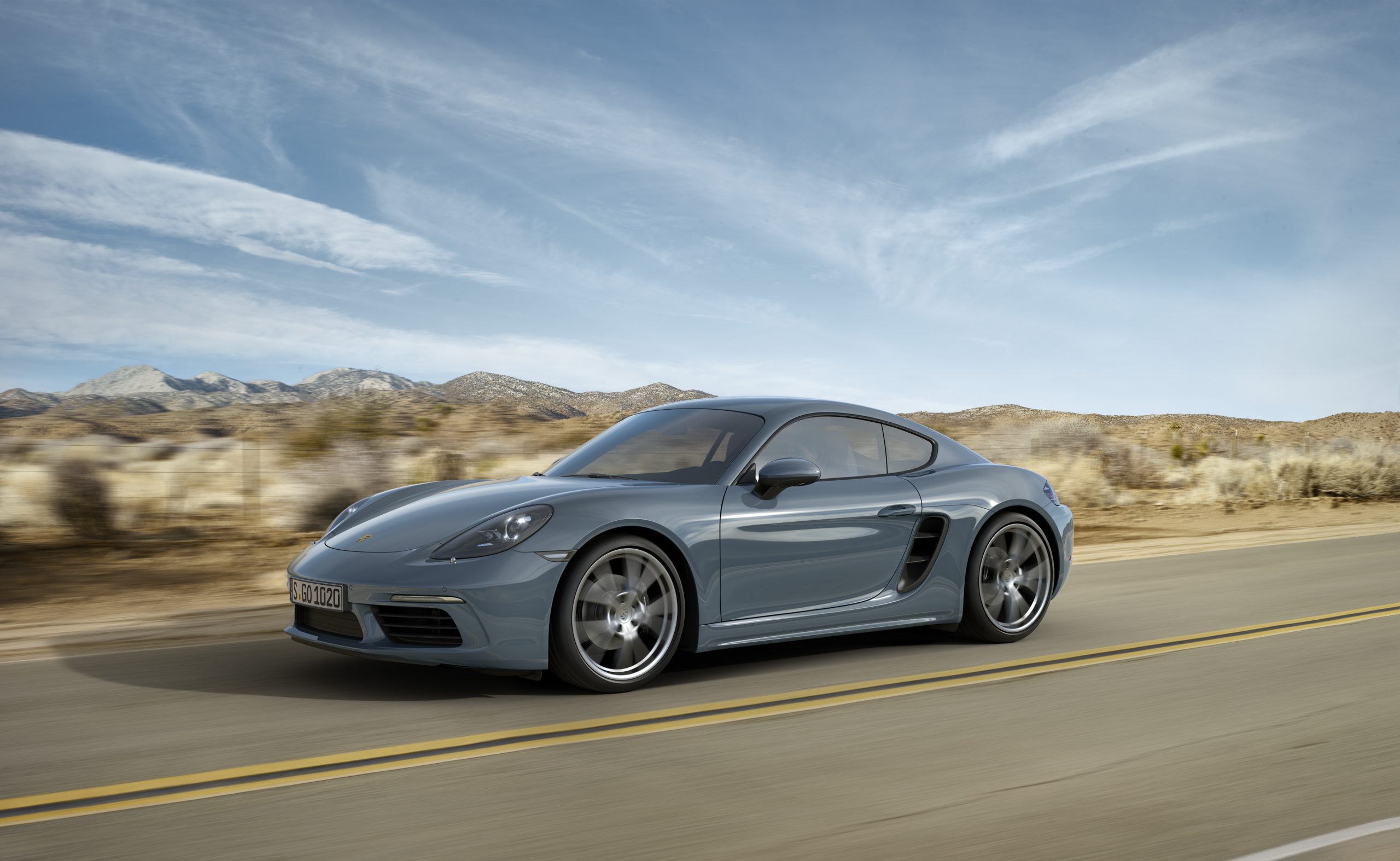
Porsche Cayman (2nd Gen) (987) Models
The Cayman S was the first production Cayman model to be released to the public as a 2006 model year offering. It got a 3.4 liter flat six with the heads from the Carrera and the camshafts from the Carrera S. It was good for 295 horsepower and 251 ft-lb's. of torque. The 2007 Cayman delivered most of the Cayman S experience at a substantially lower cost. The chassis and body are nearly identical, with the primary differences being in the power train, brakes, wheels and some minor cosmetic elements. The engine was a mini version of the one in the Cayman S, but with a 2.7 liter displacement and 245 horsepower. Porsche was delivering a facelift and introduced a number of new technologies in 2009, as well as some cosmetic changes too. The body shell and shape remained the same, but the front and rear bumper covers were updated. The engines in the 2009 cars were all new and more advanced. The Cayman engine got a 200 cc boost in displacement bringing total displacement to 2.9 liters producing 265 bhp. The new Cayman S engine doesn't gain any displacement, but thanks to the fewer moving parts and the introduction of Direct Fuel Injection (DFI), this engine produces a hefty 25 more horsepower than the M97.21.
Porsche Cayman (2nd Gen) (987) Special Models
In the middle of 2008, Porsche introduced its first 987 Cayman limited edition car, the Design Edition 1. It was a Cayman S packaged with many exclusive cosmetic options intended to commemorate the 35th anniversary of Porsche Design. In late 2008, Porsche introduced the limited edition Cayman S Sport, a Cayman S packaged with many sport options and a new DME software map to work with the Porsche Sport Exhaust, boosting the car to 303 horsepower. The Cayman R was the highlight of the special edition 987 Cayman models and is arguably one of the best driving Porsche cars ever made. It was all about reducing weight while adding performance where possible. In all, Porsche cut 121 lbs. (55 kg) in weight and was also given more performance by adding power, suspension tuning and other performance upgrades that do not require weight be added back to the vehicle. With 330 brake horsepower and some tuned suspension and stiffer springs and dampers and the R was an absolute revelation to drive. The final special edition of the 987 Cayman era was the Limited Edition Cayman S Black which was combined many of the high performance benefits found only in the 2012 Cayman R with many other desirable options off the list.
Porsche Cayman (3rd Gen) (981) Models
The Cayman S benefitted from the same engine and running gear as Porsche's latest 3.4-litre version of the 911 while the base Cayman a 2.7-litre engine. The Cayman GTS was introduced in 2014 and it got a slightly more powerful engine, a new body kit, new 20-inch Carrera S wheels, new Bi-Xenon headlights, and a new sports exhaust system. In 2015, the ultimate track oriented version of the Cayman was launched and it was an instant hit. The Cayman GT4 had a revised and a slightly de-tuned version of the 3.8-litre flat-six engine from the 911 (991) Carrera S. The GT4 was available only with a 6 speed manual transmission and weighed 1,340 kg, and had a number of track-focused options and hardware changes.
Porsche Cayman (3rd Gen) (981) Special Models
On 6 October 2015, Porsche announced a racing version of the Cayman GT4 called the Cayman GT4 Clubsport. As opposed to the road going Cayman GT4, the Clubsport version is fitted with Porsche's PDK double clutch transmission. For testing purposes Porsche Motorsport built a few tarmac rally cars based on the Cayman 981 GT4 racing version. The Cayman rally car was the course car for the WRC (World Rally Championship) 2018 ADAC Rallye Deutschland. The FIA R-GT Cup was contested on tarmac rounds of the ERC and WRC, like the German WRC event.
Porsche 718 Cayman (4th Gen) (982) Models
The 718 Cayman was introduced in April 2016, and premiered at the 2016 Geneva Motor Show. The 718 featured two new horizontally-opposed flat-4 turbocharged engines at 2.0-litre (Boxster/Cayman) and 2.5-litre (Boxster S/Cayman S) displacement with increased torque and horsepower with lower fuel consumption. The S model turbocharger utilizes Variable Turbine Geometry (VTG) technology. The 718 T models were released for the 2020 model year as more sport-oriented versions of the base 718 models. Later in October 2017, the GTS models were announced with their 2.5-litre engines rated at 360 hp. Since 2020, the GTS 4.0 model has been offered for both 718 models. The new model features the 4.0-litre flat-6 from the Cayman GT4 and Boxster Spyder, however de-tuned to 394 hp.
Porsche 718 Cayman (4th Gen) (982) Special Models
Like with its predecessor, the Cayman gets a motorsport version. The car's name is again very long and rather confusing. The official marketing names are "718 Cayman GT4 Clubsport Trackday version" and "718 Cayman GT4 Clubsport Competition version". Neither of them is street legal, something a "Clubsport" used to stand for in the past. The base version is called "Trackday" which used to be the synonym for club sport anyway. The 17% more expensive Competition variant is a real racer made for national and international racing events. Most of the cars will naturally be sold in the Competition trim as for a track day you typically want a street legal car. Many track day organizers demand a street legal car.
Join Our Porsche Community
Sign up for our weekly Porsche newsletter. The latest Porsche news, rumors, reviews and more delivered to your inbox. Cool Porsche stuff perfect for the flat-six obsessed.


